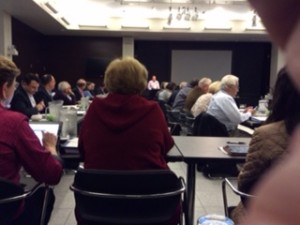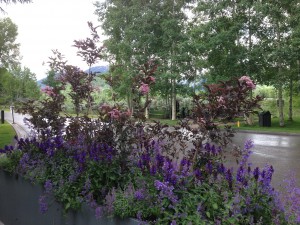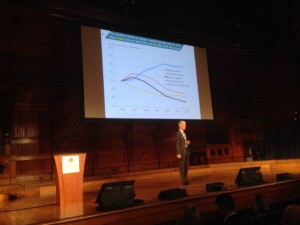In March I published this piece on “Critical Feeling” in Inside Higher Ed
With the recent proliferation of conspiracy theories and claims of hoaxes and stolen elections, educators have been asking why so many people so easily find themselves misinformed or downright deceived. Is it the human need to belong to like-minded groups? The power of social media to accelerate the filtering of information to suit preconceived ideas? We should have by now recognized the bottomless ability of those in power to lie with impunity, but the signs are not encouraging. So many Americans continue to rush off to seek the comfort of like-minded groups, heedless of whether those groups misinform or mislead.
Educators often insist that in order to strengthen our ability to resist being misled we should become better at critical thinking. And that’s understandable. For more than 50 years, educational theorists have stressed that colleges should help students determine what kinds of information are most reliable, what makes a good argument and which kinds of fallacies are associated with particular contexts of persuasion and enforcement. The Foundation for Critical Thinking points to “universal intellectual values that transcend subject matter divisions: clarity, accuracy, precision, consistency, relevance, sound evidence, good reasons, depth, breadth and fairness.” Even if one has one’s doubts about the universality of how these values take shape in in particular situations, teachers can enhance students’ appreciation of these values and, in turn, their resistance to being misled.
Yet as I think about my own students, I find myself at least as concerned with critical feeling as with critical thinking. The Norwegian psychologist Rolf Rieber has argued that “critical feelers can interrupt inappropriate feelings, use feelings to extract information about the state of another person or of the environment, and are able to change the external environment and internal states in order to be able to spontaneously perform appropriate actions by following the lead of feelings.”
It’s the “following the lead of feelings” that interests me most, given that we have been so misled due to the manipulation of emotions over the last several years. The previous presidential administration corrupted the news media with alternative facts, to be sure, but it also damaged the very soul of the public sphere by manipulating emotions — by stoking racism, xenophobia, mistrust and, perhaps most of all, resentment.
More thinking alone isn’t an antidote to this manipulation of feelings. As theorists as different as Judith Butler and Bryan Garsten have pointed out, Trump used resentment to fuel the revenge of the shamed — arousing a sense of empowerment in those who felt deplored, condescended to, dismissed. The tendency to find scapegoats for one’s misery isn’t confined, of course, to Trump supporters. Rejecting another person as being beyond the pale — be it called “canceling” or labeling someone “the enemy of the people” — provides pleasures of righteousness across the political spectrum.
Critical thinking alone will not turn us from such pleasures; reason alone never supplants sentiment. We need critical feeling — practiced emotional alternatives to the satisfactions of outrage. Outrage today is braided together with self-absorption, with the tendency to intensify group identification by finding outsiders one can detest. The outrage of many Trump supporters, often fueled by racism, targets enemies in elaborate conspiracy narratives. Among the intellectual set, outrage is sublimated into irony, allowing the chattering class to police the borders of its in-groups without overtly subscribing to their norms. One can humorously dismiss outliers without seeming to hold any beliefs of one’s own.
How to use critical feeling to dislodge these tendencies? Teachers do this all the time when we enthusiastically introduce works that students find foreign or offensive, when, as Mark Edmundson puts it, we teach what we love. We do this by using Shakespeare to expand their capacity for empathy, or when we use James Baldwin to deepen their understanding of racist betrayal. When we help students to appreciate a character in a novel who is not wholly sympathetic, or to admire an argument even when it runs counter to their own assumptions, we are expanding their emotional registers as well as intellectual ones. When our teaching invites students to occupy identities and ideologies they would never encounter in their own curated information networks, we are enhancing their consideration of the power of emotions.
When my students try to understand why Aristotle made his arguments about habit, why J. J. Rousseau saw inequality linked to the development of society, what Jane Austen meant by vanity as an obstacle to love or why Toni Morrison’s Sethe holds what haunts her, they are exercising their empathy and strengthening their power of generous insight. Whether or not they are engaging in what Merve Emre has called critical love studies, they are becoming more aware of how their feelings are aroused or redirected. In being willing to make emotional as well as intellectual connections to ideas and characters who disturb where they are coming from, they broaden where they might be willing to go. If we want our students to learn discernment and not just critique, we must give them more opportunities to consider ideas and emotions that they wouldn’t encounter on their own.
Expanding the repertoire of feelings has long been a goal of liberal education. Through history, literature and the arts we make connections to worlds of emotion, creativity and intelligence that take us beyond our individual identities and our group allegiances. The exercise of critical feeling should make us less susceptible to demagogic manipulation and to the misleading politics of resentment. It should make us more understanding of why other people care about the things they do.
By exploring the complexities of the world, our students practice making connections that are intellectual and affective. And in a political and cultural context that encourages crude parochialism under the guise of group solidarity, helping them do so through increasing their powers of critical feeling is more important than ever.





